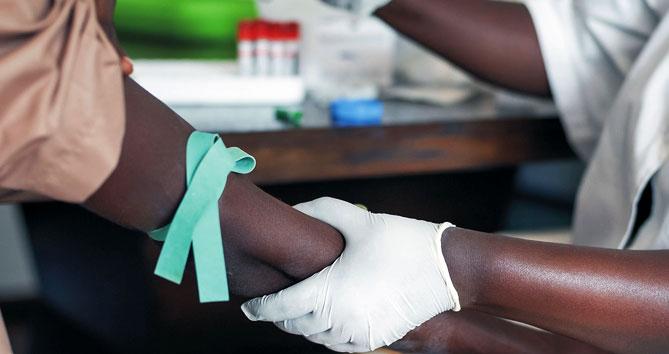Protecting against Ebola

Early in August, 27-year-old Eric Silverman, a humanitarian aid worker recently back from Sierra Leone, checked into Mount Sinai Hospital in Manhattan with symptoms of the deadly Ebola virus disease (EVD), now claiming thousands of lives in West Africa. This raised serious concerns for American medical personnel. According to the Center for Disease Control, two groups are at highest risk for contracting the virus: family and friends of those infected, and healthcare workers. NYSNA immediately issued a Practice Alert – EBOLA VIRUS: WHAT NURSES NEED TO KNOW – to help stem the potential for spread of the virus, if confirmed, and to safeguard the health of medical staff, and patients and the public in turn.
Ebola alert
With a fatality rate of 60-90 percent, make no mistake: Ebola kills. As of August 28, 2014, the World Health Organization and the Center for Disease Control counted 3,069 suspected and confirmed cases of Ebola and 1,552 suspected Ebola-related deaths in four African countries: Guinea, Liberia, Nigeria, and Sierra Leone. Recently, Senegal reported its first case of Ebola, raising fears that again the epidemic may be spreading.
According to the NYSNA Practice ALERT, “It is not always possible to identify a patient with EVD immediately because early symptoms may be non-specific. Therefore, it is important that health care workers (HCWs) use standard precautions consistently with all patients and in all work practices. This includes: hand hygiene, respiratory hygiene, and personal protective equipment (to limit contact with infected materials and splashes).” NYSNA also outlined additional precautionary measures that have proved successful barriers to transmission in cases of suspected or confirmed Ebola. There is no approved drug to treat the disease.
ZMapp, an experimental drug with limited availability, has been judiciously administered to a limited number of patients. It was part of the successful treatment of two American doctors who contracted Ebola on the frontlines of the epidemic in Liberia. However, for some who received ZMapp it proved ineffective and they died.
A low priority
This has raised questions and eyebrows about the way drug development is funded. The vast majority of Ebola victims live in dire poverty in remote Central and West African rain forests. If they were wealthy and Western, would an approved treatment already be on the market and widely available for use?
The Ebola virus, named for the Ebola River in the northern Democratic Republic of the Congo, was first identified in 1976. Almost 40 years later, even the supply of the experimental (and sometimes successful) ZMapp has run out. According to James Surowiecki, writing in the New Yorker, “When pharmaceutical companies are deciding where to direct their R. & D. money, they naturally assess the potential market for a drug candidate. That means that they have an incentive to target diseases that affect wealthier people (above all, people in the developed world), who can afford to pay a lot. …” This economic dynamic gives Africa and EVD a low priority. That needs to change.
Remaining vigilant
There is, however, some good news for those in the trenches. The Ebola virus is difficult to spread. It is not thought to be airborne, and is transmitted largely through contact with bodily fluids of an infected person. At Mount Sinai, Eric Silverman’s symptoms were a false alarm. Even so, the incident served as an unpleasant reminder. An ocean may separate us from Ebola, but an outbreak is only one short plane ride away.